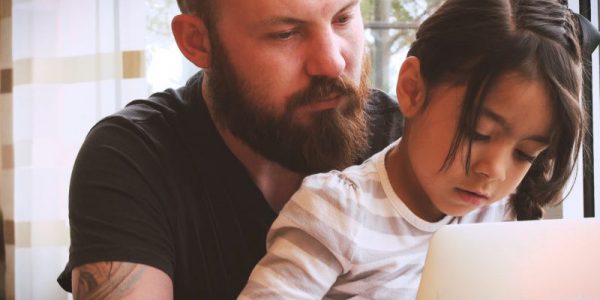New studies published by Nuffield Family Justice Observatory suggest pandemic has brought the advantages of digital communications for teenagers to the fore, though digital poverty and video calls with infants pose greater challenges.
Digital platforms are helping to keep children living in residential, foster or kinship care in touch with their birth families during lockdown, and could have a role to play in maintaining these vital relationships beyond the pandemic, according to two new reports carried out by the National Centre for Social Research and the University of East Anglia (UEA), published today.
Face-to-face contact between looked-after and adopted children and their birth families has not been explicitly forbidden while social distancing measures are in place, but guidance from the Department for Education issued in April noted that it would ‘for the most part, need to take place virtually’.
The new studies—one on the experiences of families and professionals involved with managing contact during lockdown, and one on what is known more widely about the implications of digital contact for the well-being of children—were commissioned by Nuffield Family Justice Observatory. They offer insights into how agencies have been responding to the new challenges, and how digital communication might be incorporated into contact arrangements during and beyond the pandemic.
Almost 200 children’s social care professionals, foster carers, kinship carers or adoptive parents, and birth relatives (predominantly mothers) responded to a survey carried out by UEA into their experiences of contact since 23 March. According to the survey, video calls have been used widely to replace face-to-face contact during lockdown, with Microsoft Teams, Zoom and Skype all being used to stay in touch alongside text messaging and phone calls.
Generally older children and young people were more likely to feel comfortable using digital technology in this way, and for some it was a preferred way of communicating that felt more ‘normal’ than professionally supervised contact. Though there were positive experiences reported, both parents and children have mourned the loss of physical closeness: ‘It left him feeling the loss of her hugs’, said one carer about a boy and his mother.
The significant challenges came when using video calls with babies and young children (predominantly the under-fives) as well as some older children with disabilities, or where children’s relationships with their parents were not generally good and children disliked having this contact in their ‘safe space’. The most devastating potential impact was parents’ concern that this could reduce the chances of a child returning home, with the loss of physical contact seen as detrimental to developing or sustaining a relationship.
Lisa Harker, director of Nuffield Family Justice Observatory, said:
“For some children, particularly teenagers, digital contact could be valuable in the longer term. The evidence suggests that the quality of contact is more important than its frequency or medium. The reticence among practitioners and carers about using digital platforms for the children in their care may well be assuaged by experience during the pandemic. With clear benefits for certain children, it seems important to find ways to adapt digital technologies to address adults’ concerns about boundaries and safety, rather than avoid them altogether.”
Professionals in the study recognised the benefits of greater integration of the different people in children’s lives as foster carers started communicating directly with parents for example. Foster carers also reported positive experiences of being more involved in organising contact for the children in their care, though some struggled to manage boundaries once contact was happening in their own home.
Digital poverty or inexperience with technologies has been a barrier on both sides though, some carers and families said they had struggled to manage without computers, smart phones or WiFi, or the confidence to master new platforms.
Professor Elsbeth Neil from the Centre for Research on Children and Families at UEA, said:
“Using digital technology to help children connect with their families has presented new challenges as well as opportunities and it is clear that an individual approach is needed. The challenges have been greatest for the youngest children as it is harder for them to connect with parents just on a screen. But this has been a time of rapid learning. Carers, professionals and parents have all been finding creative ways to make calls more child friendly and have a family like feeling, for example by including games, songs and stories. The importance of the adults around the child working together to find solutions has been underlined.”
A review of studies from the UK, USA, Canada and Australia, conducted by the National Centre for Social Research, noted the specific benefits that digital contact can offer, such as more regular and informal connection, helping children and parents to keep up with each other’s day-to-day lives. The review also indicated that digital contact should be used to enhance, rather than replace, face-to-face contact.
Perspectives on the value of digital contact can vary, however, and young people’s enthusiasm for digital contact is not always matched by social workers and foster carers. The review found adults are often more worried about how to maintain the safety and boundaries of digital contact, whereas young people value the greater sense of freedom that digital communication affords them.
Dr Padmini Iyer, Senior Researcher in the Children and Families Team at the National Centre for Social Research, said:
“This research shows that the immediacy of digital contact can help young people feel more connected to their birth families and in control over their contact arrangements. Adopting a child-centred approach and providing professional support for all parties involved are key to ensuring positive outcomes, especially in the context of social distancing measures. We hope the review will support policymakers and practitioners managing the transition to digital contact during the COVID-19 pandemic.”










